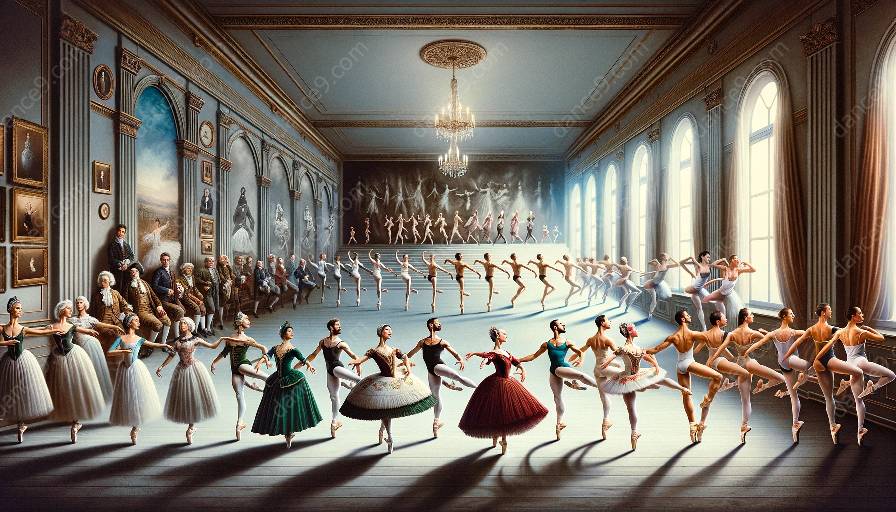Ballet is a classical art form that has undergone significant evolution over the centuries, leading to the development of both classical and contemporary ballet techniques. Understanding the key differences between these two techniques requires a deep dive into the evolution of ballet and its history and theory.
Evolution of Ballet Techniques
Ballet originated in the Italian Renaissance courts of the 15th century and later developed in France and Russia as a concert dance form. The evolution of ballet techniques can be traced through the significant contributions of choreographers, dancers, and innovators over time. Classical ballet techniques were established during the 17th and 18th centuries, while contemporary ballet techniques have emerged as part of the evolution of ballet in the 20th and 21st centuries.
Classical Ballet Techniques
Classical ballet places a strong emphasis on form, technique, and precision. It is characterized by its traditional repertoire, defined positions (e.g., turnout, tendu), and codified movements. The five basic positions of the feet and arms serve as the foundation for classical ballet. The technique focuses on maintaining an erect posture, graceful movements, and elaborate footwork. Choreography in classical ballet often follows a narrative structure and is commonly associated with famous productions such as "Swan Lake" and "The Nutcracker."
Contemporary Ballet Techniques
Contemporary ballet, on the other hand, has evolved to incorporate a more fluid and expressive movement vocabulary. While it retains some classical elements, contemporary ballet techniques embrace a broader range of movement styles and may experiment with unconventional forms and themes. Dancers are encouraged to explore emotional depth, body articulation, and individual artistry. Choreographers often challenge traditional norms and incorporate modern music, innovative costumes, and abstract storytelling in contemporary ballet productions.
Ballet History and Theory
Studying the history and theory of ballet provides insight into the social, cultural, and artistic influences that have shaped ballet techniques over time. Historical figures such as Marius Petipa and Sergei Diaghilev, and influential ballet companies like the Royal Ballet and the New York City Ballet, have contributed to the development and preservation of classical ballet techniques. In contrast, contemporary ballet techniques have been influenced by the works of choreographers such as George Balanchine and William Forsythe, who pushed the boundaries of traditional ballet and paved the way for innovation in contemporary dance.
In conclusion, the key differences between classical and contemporary ballet techniques stem from their distinct approaches to movement, form, and artistic expression. As ballet continues to evolve, it is essential to appreciate both the rich history and the dynamic evolution of ballet techniques, acknowledging the contributions of classical and contemporary styles to the art form's enduring legacy.





























